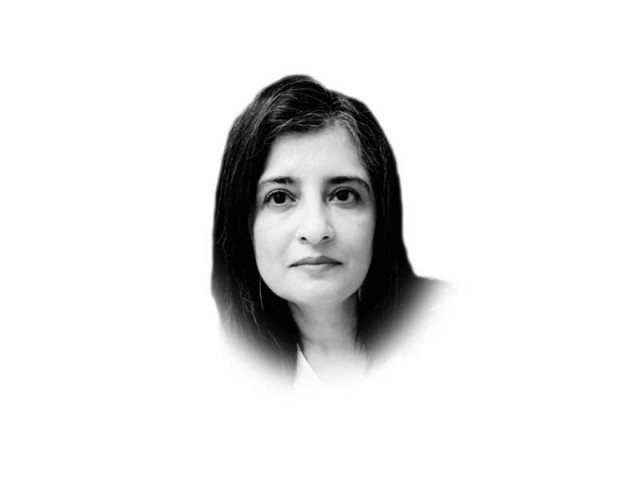Need for a new development agenda
Need for a new development agenda

In 2015, all UN member states, including Pakistan, adopted the Sustainable Development Goals under the 2030 Agenda for Sustainable Development. Later in 2016, the parliament in Pakistan unanimously approved SDGs as the national development agenda. Pakistan’s grim performance on the Millennium Development Goals was a judgment call for political leaders and government public service departments. Contrary to MDG, two things were very encouraging while adopting the SDG, particularly in Pakistan: first, all political parties agreed to this agenda, thus continuity was expected; and second, the Federal Bureau of Statistics, Islamabad, was asked to collect and streamline data on SDG for better accountability. Initiatives during the early years of adoption of SDG were not outstanding, but they were at least better promising than MDG.
In order to achieve well-defined time-based targets, it is important that each state ensures that it is ‘on track’ and ‘the speed of convergence’ toward the goals is reasonable. A thesis at Quaid-i-Azam University in 2017 revealed that if the situation remains the same, the goal of 100% literacy cannot be achieved before 2050. Pakistan’s ranking in the SDG index was 134 among 166 nations in 2020, and we should remember that historically we were off-track on all indicators of MDG.
This pandemic is not only a global health crisis but also an economic and social crisis. For a fragile state like Pakistan, the 2030 development agenda was already over-ambitious, and with the current pandemic, the agenda seems almost irrelevant. If we consider a very optimistic situation, it does not seem easy to achieve these goals in almost half a century. It is crucial to design a new and innovative development agenda for the post-pandemic period while keeping in view the present situation.
In the pre-Covid-19 period, the statistics on child and infant mortality, maternal health and non-communicable diseases were very disappointing, and need was highlighted to consider them as the top priority in Pakistan. These indicators are highly linked with mother’s education, and there is no doubt that girls’ education is adversely affected, far above than those of boys during the present crisis. Many girls who were trying hard to reach schools, due to such long breaks would be dropped out. Much of those resources allocated for these priority areas for social uplift are now directed toward the national combat with this deadly virus. Employment, growth, poverty and inequality, every variable moved toward an undesirable direction or became stagnant.
The current situation is a call for an emergency to design and implement a new revolutionary development agenda. Thoughtful reforms in every sector seem to be the only viable solution. To entertain and prepare the youth bulge, which is entering the labour market, will certainly be the most serious concern in coming years. Tertiary education must focus on technology, innovation and entrepreneurial skills. To explore and capture the Middle Eastern, African and Central Asian markets, the technical skills and training after higher secondary school should be widely available along with diplomatic agreements with countries of potential markets.
Effective distribution should be the heart of the new development agenda. Enormous inequality is going to be the most considerable challenge across the globe. Efficient and wiser financing in each sector would be required. For instance, cash transfer to reduce poverty is like weeding around the edge of the problem, which may not work in the long run unless we increase the capability of the more impoverished households to generate a stream of income. A thoughtful approach is required to uplift the poorest of the poor social class. Along with the distribution of public sector resources, rethinking is required for the distribution of private wealth.
Interactions between different goals are not properly addressed in the SDG. The question of connecting one sector with another must be addressed in the new development agenda. For instance, the connection between education and industry, government and think tanks, public and private sector, regulatory bodies, markets, and businesses should provide synergies and play a complementary role for each other. Unless we develop strong synergies between different activities, we will continue compromising on different trade-offs, like the trade-off between growth and inequality, industrialisation and environment, etc.
On the one hand, the new development approach must shift its axis from the extraction and consumption approach to human progress and well-being. On the other hand, to address the external sector issues, all developing countries should form an alliance against unfair trade and investment agreements in the name of so-called liberalisation at the cost of developing nations.
Finally, the agenda formation should be developed upon connectivity, linkages and network of initiatives, which must be embedded in the system. The new development agenda should provide a system and well-connected activities while addressing our complexities. It is not very worthy of living with a long list of goals till 2030 in the post-pandemic period.
Published in The Express Tribune, June 16h, 2021.
Like Opinion & Editorial on Facebook, follow @ETOpEd on Twitter to receive all updates on all our daily pieces.
















COMMENTS
Comments are moderated and generally will be posted if they are on-topic and not abusive.
For more information, please see our Comments FAQ